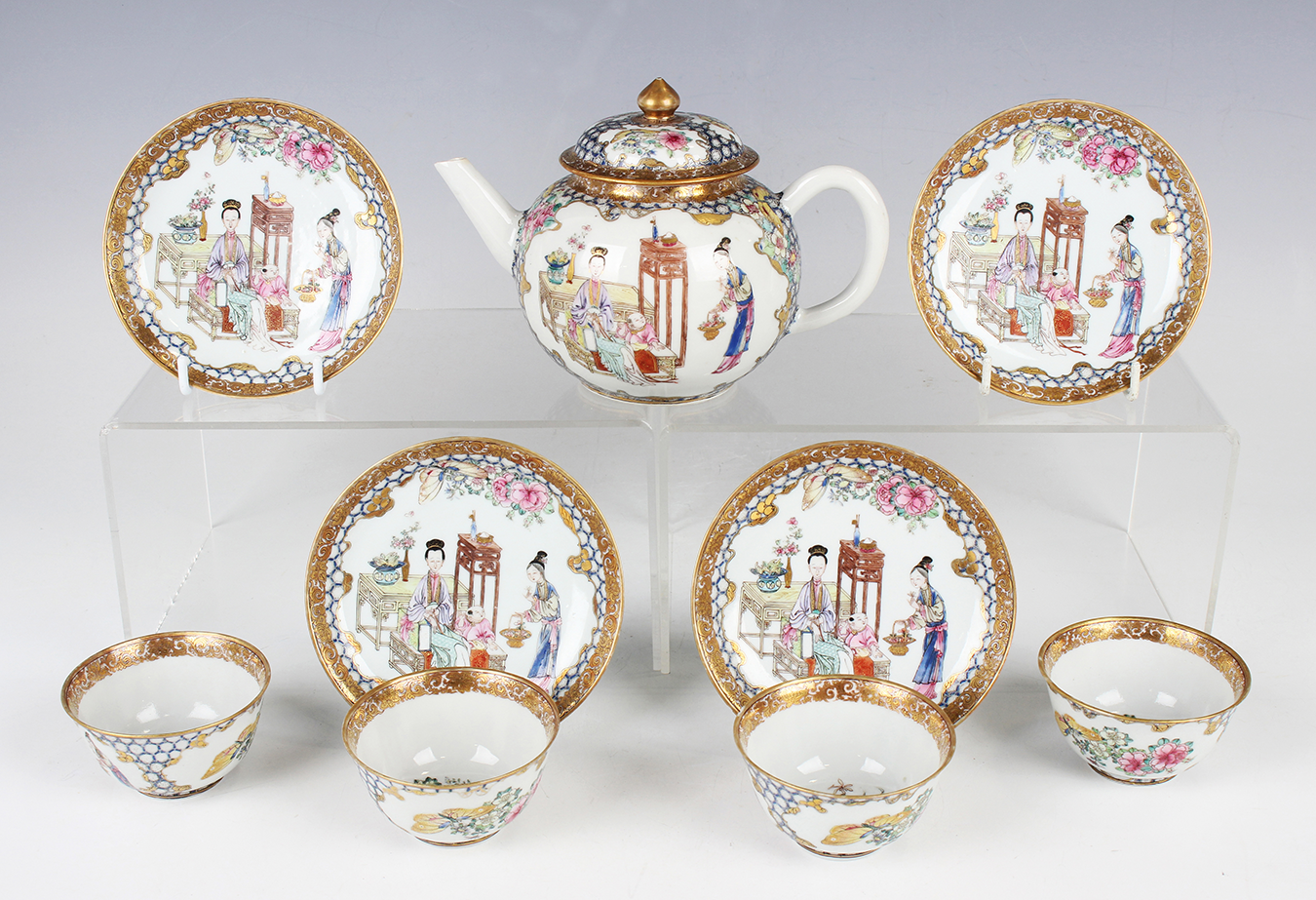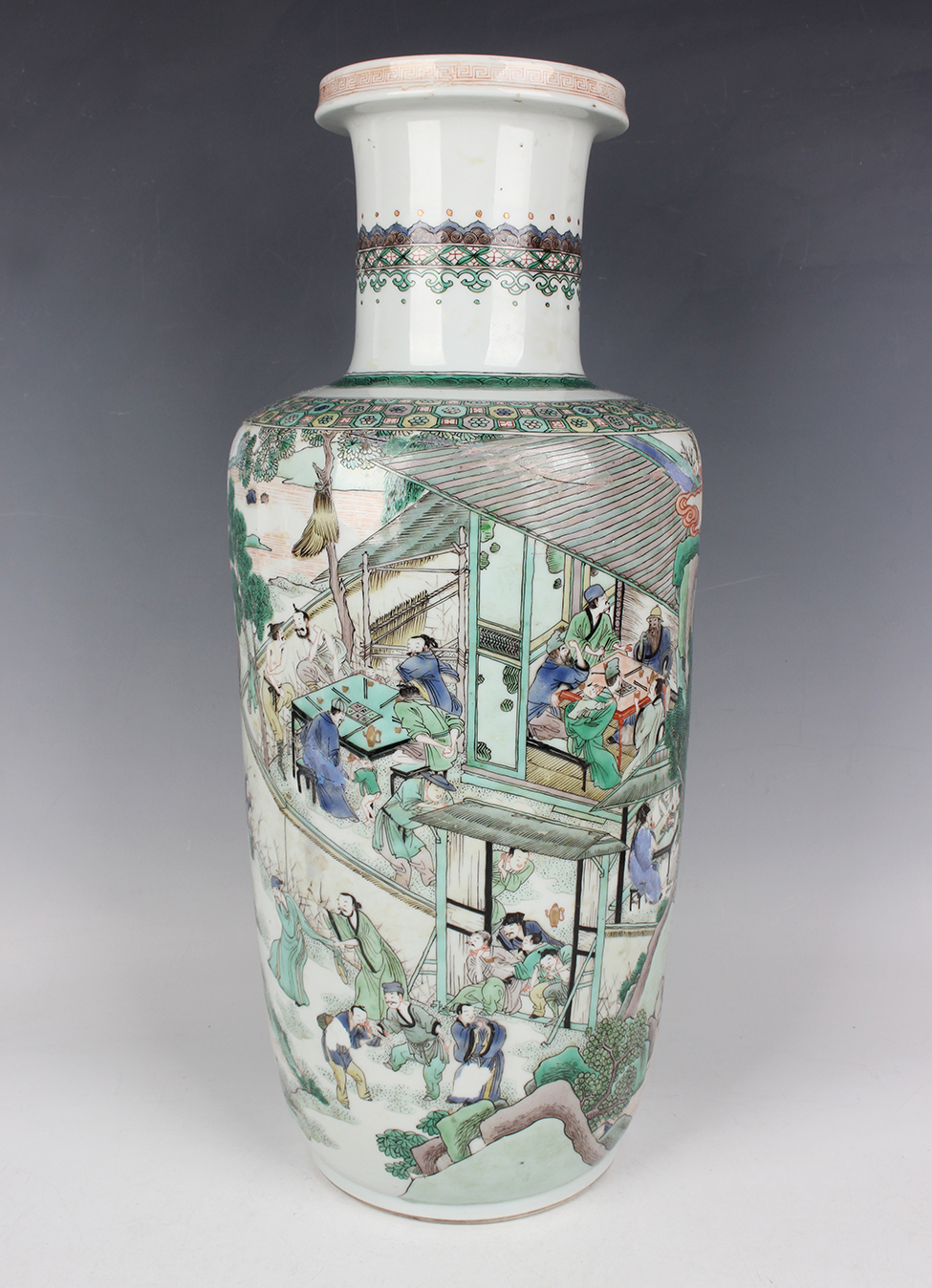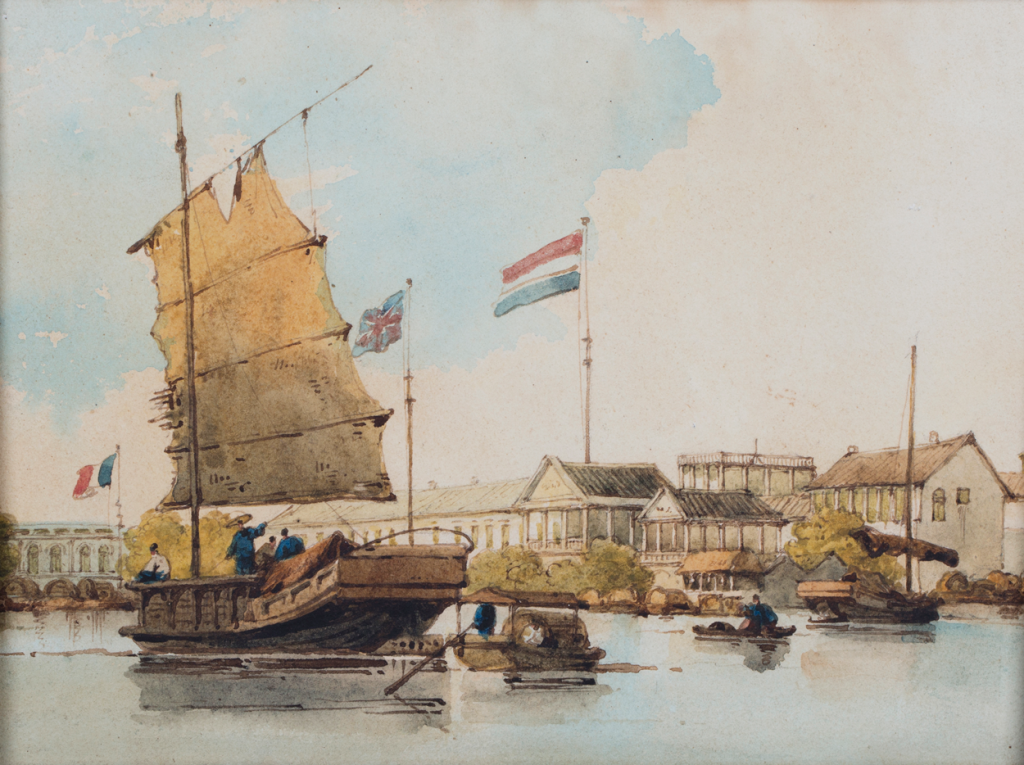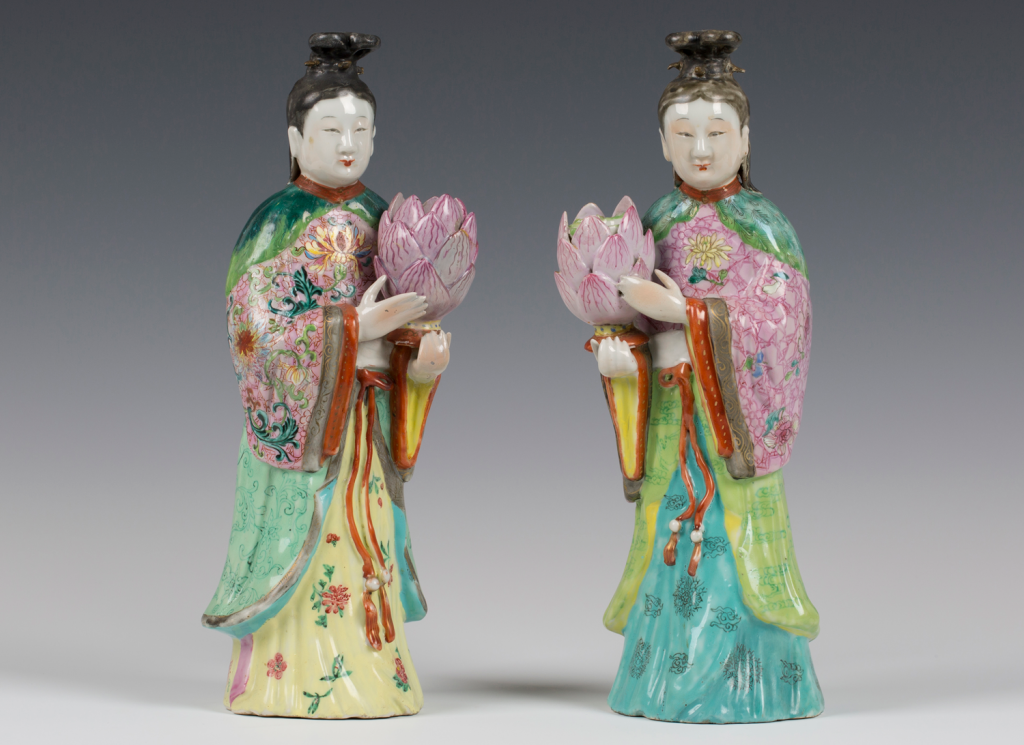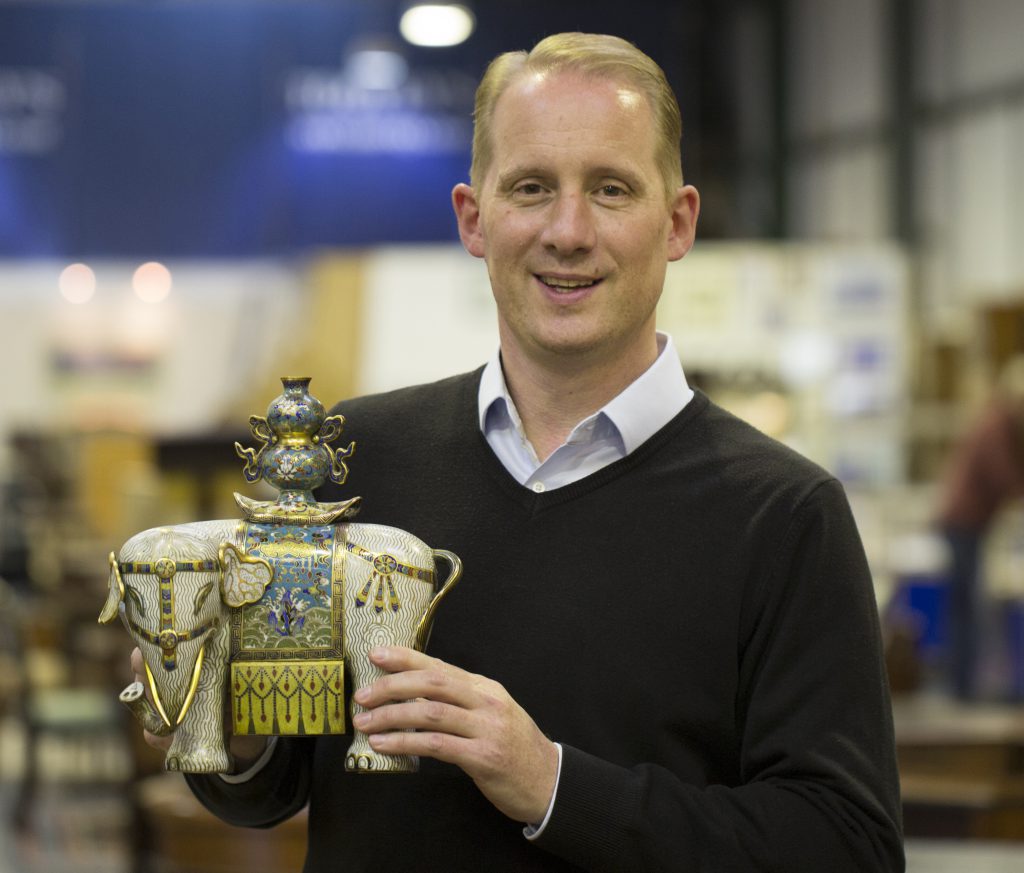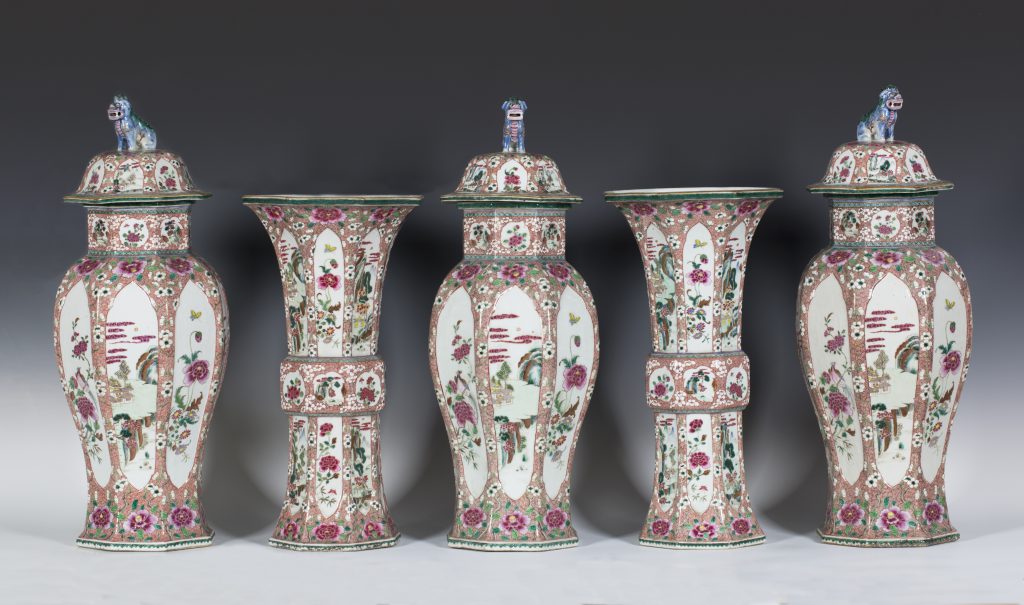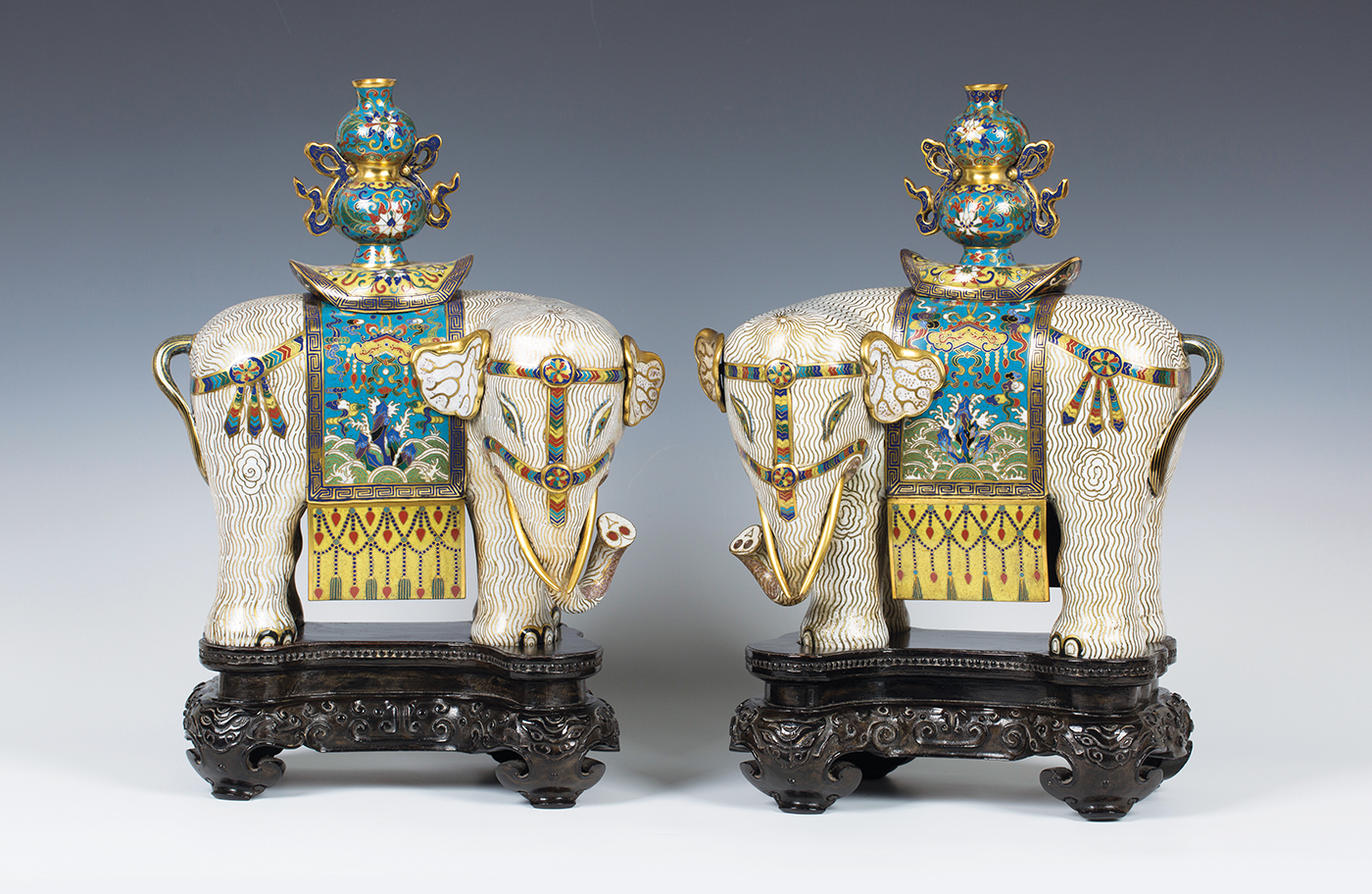
It is likely that the techniques employed in Chinese cloisonné came from the Near East. The tradition of enriching metal objects by fusing a composition of ground up multi-coloured glass under heat stretches back over some 3000 years.
Enamel decoration reached its heights in Byzantium and European sacred art of the early and high Middle Ages. The term cloisonné describes the method of creating compartments on a metal object using raised wirework borders, known as cloisons in French. These thin borders remain visible on the finished object separating the compartments of variously coloured enamels. The enamelled powder is worked into a paste to allow its application before being fired in a kiln. It is likely that these techniques reached China from the Middle East in the 14th century. Byzantium also influenced these developments especially after the fall of Constantinople in 1453 when refugees, in all likelihood, brought their knowledge of enamelling to China.
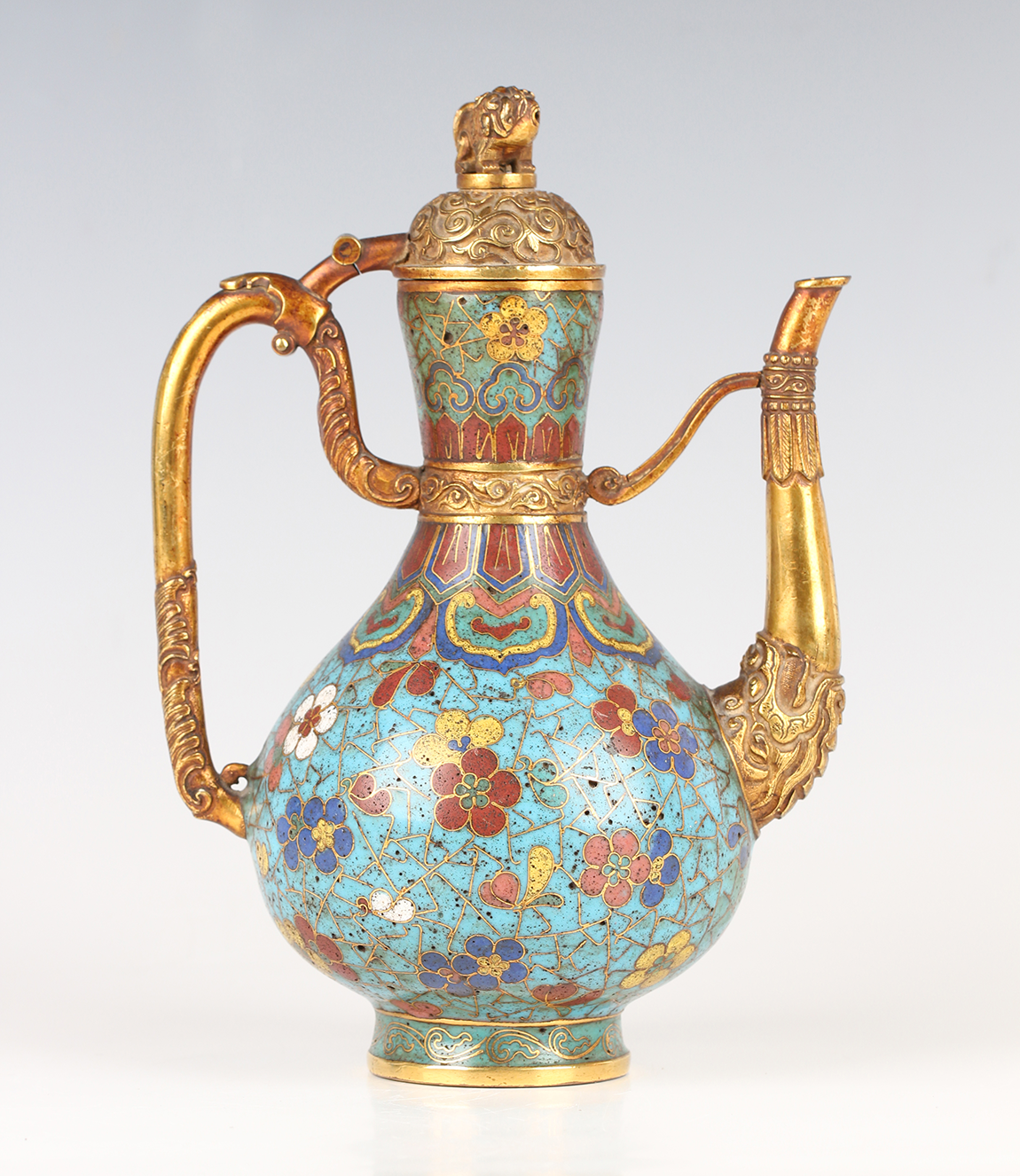
In China high quality enamelling becomes apparent from the Ming dynasty (1368-1644) onwards. Importantly this branch of artistic endeavour received the patronage of the Imperial Court in China. In the 18th century the emperor Qianlong (1736-1795) surrounded himself with resplendent enamel works in his summer residence. Measuring 18.5cm the Chinese cloisonné enamel and gilt copper ewer had the mark of Qianlong and was of the period. It’s beautifully conceived pear-form body was decorated with blue, red, yellow, white and pink prunus on a ‘cracked ice’ turquoise ground. The gilded neck was also decorated with prunus above a stiff leaf collar and band of ruyi heads uniting the gilt domed cover with its Buddhistic lion knop finial and the chimera mouth scroll spout with the foliate capped scroll handle.
The pair of Chinese cloisonné enamelled figures of elephants probably dated from the Jiaqing period (1796–1820) and were 40cm high. Each caparisoned beast was decorated with colourful trappings and draped in a saddle cloth, brightly enamelled with a hanging chime and vapours above crashing waves on a turquoise ground. The elephant in China is one of the seven Buddhist sacred treasures and symbolizes peace. The combination of an elephant supporting a vase on its back is a reference to peaceful times (taiping youxiang). The decorative motif and symbolism was used on the Imperial throne. These two fine examples of the art of Chinese cloisonné were sold for £13,000 and £15,000 respectively in Toovey’s specialist sales of Chinese and Asian Art reflecting its continuing allure to collectors today.
